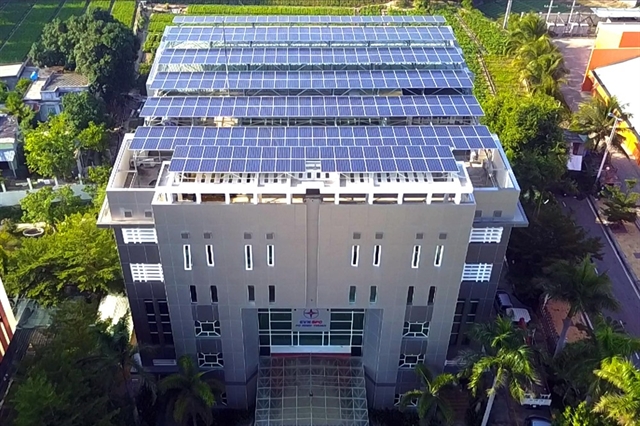
| Renewable energy projects in Ninh Thuận face overloaded electricity grid |
|
11/21/2019 10:37:30 AM The central province of Ninh Thuận has seen a boom in renewable energy projects, especially solar power, but power transmission lines in the province have failed to handle the capacity, experts have said.
 A number of solar and wind projects in the province have been developed after preferential incentives on prices for renewable power were issued, according to the Ministry of Industry and Trade. Many renewable energy projects, however, cannot operate at full capacity. Lưu Xuân Vĩnh, chairman of the province’s People’s Committee, said the Government and the ministry had approved 30 solar power projects in the province with total capacity of more than 1,817MW and total registered capital of over VNĐ50 trillion (US$2.13 billion). Since June, as many as 18 solar and wind projects have been operating but they have had problems connecting fully with the national grid. As a result, 10 renewable energy power projects among 18 in the province were forced to reduce capacity when the grid became overloaded, with damage estimated up to VNĐ500 billion ($21.7 million). To solve the problem, he recommended that the Government build more 220-500KV transmission lines and stations to serve wind and solar power plants in the province. Nat’l energy security At a recent meeting with provincial officials, Deputy PM Trịnh Đình Dũng said that wind and solar power in Ninh Thuận were contributing greatly to national energy security. Within one year, the province installed more than 1,000MW of wind power and solar power, but the transmission infrastructure has not kept pace with the development of electricity production. As of June 30, more than 80 solar power plants with a combined capacity of 4,460MW have been connected to the national grid, according to the Electricity of Việt Nam (EVN). EVN has agreed to continue the current feed-in tariff (FiT) rate of 9.35 US cents per kWh for rooftop solar-power projects nationwide until 2021, as proposed by the Ministry of Industry and Trade. Under the FIT programme, the feed-in tariff rate was effective between June 1, 2017 and June 30 this year to all types of solar technologies, including floating, ground-mounted, and rooftop solar-power projects. By the end of this year, another 13 solar power plants are scheduled to be connected to the national grid, with a combined capacity of 630MW, raising the total number of the country’s solar power plants to 95. Ninh Thuận aims to become the renewable energy centre of the country. Blessed with abundant sunshine and wind year round, the province is home to 25 solar power projects. The province has a high level of sunshine hours (2,467) per year and solar radiation per square metre (1,700kWh), making it ideal for solar energy projects. Under the province’s green energy plan, by 2030 the province is expected to reach a total capacity of 1,500MW in wind energy and 3,912MW in solar energy. Việt Nam’s national grid was overloaded in the second quarter of this year, with an influx of 89 new renewable power plants becoming active, many in Ninh Thuận, where solar radiation is high. Several plants had to operate at about only 60 per cent of their maximum capacity, which could causes financial losses this year, according to investors. The rapid construction of new renewable energy power plants in the first half of this year came as investors sought to beat the June 30, 2019 deadline to enjoy the FiT of 9.35 cents per kWh for the next 20 years, experts said. The registered capacity of solar power projects in Việt Nam has reached 25,000 MW, far exceeding the government’s initial target to have 4,000 MW by 2025. Renewable energy accounts for 9 per cent of Việt Nam’s energy mix, already surpassing the target of 7 per cent set for next year, according to EVN. |
| VNS |